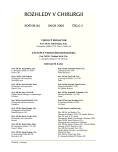Hemiarthroplasty in Intracapsular Femoral Neck Fractures
Cervikokapitální náhrada u intrakapsulárních zlomenin krčku femuru
Cervikokapitální náhrada má stále své místo v terapeutickém algoritmu léčby dislokovaných intrakapsulárních zlomenin krčku femuru. Oproti osteosyntéze je zatížena menším počtem komplikací a umožňuje bezprostřední pooperační zátěž. Její výhodu proti totální náhradě je menší operační zátěž, ale v dlouhodobější perspektivě bývá zatížena poškozením acetabula. Proto je určena především pro biologicky starší pacienty s menší fyzickou aktivitou a bez artrotických změn na kyčelním kloubu. U těchto pacientů vystačíme s cementovaným monoblokem. V případě biologicky mladších pacientů, kde není možné z celkových či lokálních příčin provést totální náhradu, je indikována modulární cervikokapitální náhrada s vyměnitelnou hlavicí. Ta umožňuje v případě eroze acetabula snadnou konverzi na totální náhradu. Pokud je CCEP správně indikována, má být technicky správně provedena. Především je nutné dodržet vztah mezi středem hlavice a hrotem velkého trochanteru, tj. střed hlavice má být 1 až 2 mm pod úrovní apexu velkého trochanteru. Dále je to nastavení správné anteverze a provedení sutury pouzdra jako prevence pooperační luxace.
Klíčová slova:
intrakapsulární zlomeniny krčku lemuru – cervikokapitální náhrada – zlomeniny proximálního lemuru
Authors:
J. Bartoníček; J. Skála-Rosenbaum; V. Džupa; F. Svatoš; R. Bartoška
Authors‘ workplace:
J. Bartoníček, DrSc.
; Ortopedicko-traumatologická klinika, 3. LF UK a FNKV, Praha-Vinohrady, přednosta: prof. MUDr.
Published in:
Rozhl. Chir., 2005, roč. 84, č. 2, s. 88-95.
Category:
Monothematic special - Original
Overview
Hemiarthroplasty has still its place in the therapeutic algorithm of the treatment of dislocated intracapsular femoral neck fractures. As compared to internal fixation it is accompanied by less complications and allows an immediate postoperative weight bearing. In contrast to total hip arthroplasty, this operation is not so demanding for the patient. However in the longterm perspective it is often associated with erosion of acetabulum. Therefore it is indicated mainly for biologically older patients with less physical activity without osteoarthritis of the hip. In these patients we usually prefer a cemented monoblock hemiarthroplasty. In case of biologically younger patients where it is impossible to use total hip arthroplasty due to general or local condition, modular hemiarthroplasty is indicated with a removable head allowing in case of acetabular erosion an easy conversion to total hip arthroplasty. Hemiarthroplasty must be correctly indicated and technically properly performed. First of all it is necessary to respect the relation between the centre of the prosthetic head and the apex of the greater trochanter, i.e. the head centre should be 1-2 mm below the level of apex of the greater trochanter. Further, it requires a correct anteversion and suture of the articular capsule as a prevention of postoperative dislocation.
Key words:
intracapsular femoral neck fractures, hemiarthroplasty, proximal femur fractures
Labels
Surgery Orthopaedics Trauma surgeryArticle was published in
Perspectives in Surgery

2005 Issue 2
- Metamizole at a Glance and in Practice – Effective Non-Opioid Analgesic for All Ages
- Metamizole vs. Tramadol in Postoperative Analgesia
- Safety and Tolerance of Metamizole in Postoperative Analgesia in Children
Most read in this issue
- Pseudolymphoma of the Breast Nipple. The Problem Overview
- Hemiarthroplasty in Intracapsular Femoral Neck Fractures
- Urgent Management of the Complex Pelvic Fractures
- Oesophageal Perforations
